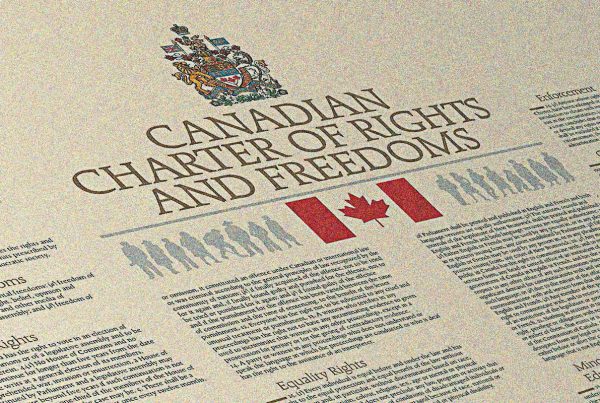On May 29, 2025, the Quebec Superior Court upheld the constitutionality of the freeze on the provincial electoral map enacted by the National Assembly in May 2024. The Court found that the freeze infringes section 3 of the Canadian Charter of Rights and Freedoms (“Charter”), but that this infringement is justified in a free and democratic society under the section 1 test.
The Canadian Civil Liberties Association (“CCLA”) is pleased that the judgment explicitly endorses one of the arguments it raised as an intervenor — namely, that a law which interferes with an established electoral boundary redistribution process without proposing a new one violates section 3 of the Charter. However, the CCLA is disappointed by the weight the Court gave, at the section 1 stage of the analysis, to the fact that the freeze was adopted unanimously by the National Assembly.
* * *
In May 2024, the National Assembly interrupted the usual redistribution process conducted by the Electoral Representation Commission (“Commission”), arguing that the legislature wished to take time to reform the criteria guiding the Commission’s work. This redistribution process, required after every second election under the Election Act, aims in particular to prevent the undue dilution of certain citizens’ votes based on their place of residence.
The freeze followed a controversy sparked by the Commission’s preliminary recommendation to merge the ridings of Bonaventure and Gaspé, to realign the voting power of citizens in those areas with the provincial average. In practice, the freeze also prevents the Commission from remedying the dilution of votes in other ridings across Quebec.
A coalition of citizens residing in those ridings challenged the freeze. Before the Court, the coalition argued that halting the Commission’s work and holding the 2026 election without a new map unreasonably and unjustifiably violated their democratic rights under section 3 of the Charter.
In assessing the infringement of section 3 of the Charter, the Superior Court recognized the importance, in a democracy, of citizens’ fundamental right to play a meaningful role in the electoral process. This constitutional protection includes the right to effective representation — a concept that includes not only relative parity of voting power regardless of riding but also considers other factors such as geography, history, community interests, and minority representation.
At this stage, the Court focused on both the outcome of the freeze (i.e., the dilution of votes in certain ridings beyond the variance tolerated by the Election Act) and the process used to achieve that outcome. On the latter point, the Court accepted CCLA’s argument that there is necessarily a violation of section 3 when a law interferes with an established redistribution process without proposing a replacement.
However, the Superior Court concluded that this violation of section 3 was justified under section 1 of the Charter, notably because of a rational connection between the freeze and the State’s objective. That objective was defined as preserving the voices of regions experiencing demographic decline and giving the legislature time to engage in a broader societal debate on the criteria for redrawing the electoral map.
In assessing whether the measure minimally impaired the protected right, the Court acknowledged that at least one alternative to the freeze existed but placed considerable weight on the fact that the decision to interrupt the redistribution process had unanimous support in the National Assembly. The Court referred to a parliamentary custom requiring broad consensus among political parties for electoral laws, and concluded that in the absence of evidence showing that any alternative could have achieved similar consensus, the freeze met the minimal impairment requirement.
In doing so, the Court effectively reversed the usual burden of proof under section 1, requiring the applicants — not the State — to provide evidence regarding minimal impairment. The Court also dismissed or ignored several viable alternatives that might have been less harmful to the applicants’ rights, such as allowing the Commission to continue its work, adding seats, or granting special status to the Gaspésie region. These options could have been adopted on a temporary basis and revisited as part of the broader reform the National Assembly intends to pursue after the next election.
At the final stage of the analysis, the Court concluded that the benefits of the freeze outweighed its negative effects. This conclusion was based primarily on the Court’s view that the significant harm to the applicants –– the dilution of their voting rights –– would be temporary, since the freeze applies only to the next election. In contrast, the Court emphasized the importance the legislature placed on the measure’s benefits, particularly preserving the Gaspésie riding. Yet, some alternatives to the freeze could have preserved Gaspésie’s interests without infringing on those of the applicants, or would have only temporarily affected Gaspésie residents’ interests.
In the recent Working Families decision, the Supreme Court of Canada reminded lower courts to scrutinize legislative choices more closely when core democratic rights — such as those protected by section 3 — are at stake. The unanimity surrounding the National Assembly’s decision appears to have led the Superior Court to adopt an overly deferential stance toward the legislature. This approach raises concerns, particularly given the structural conflict of interest that arises when elected parties enact legislation governing elections.
The CCLA thanks Julien Boudreault, Patrick Plante, and Filipe Costa of Borden Ladner Gervais LLP for their excellent pro bono representation in this case.




